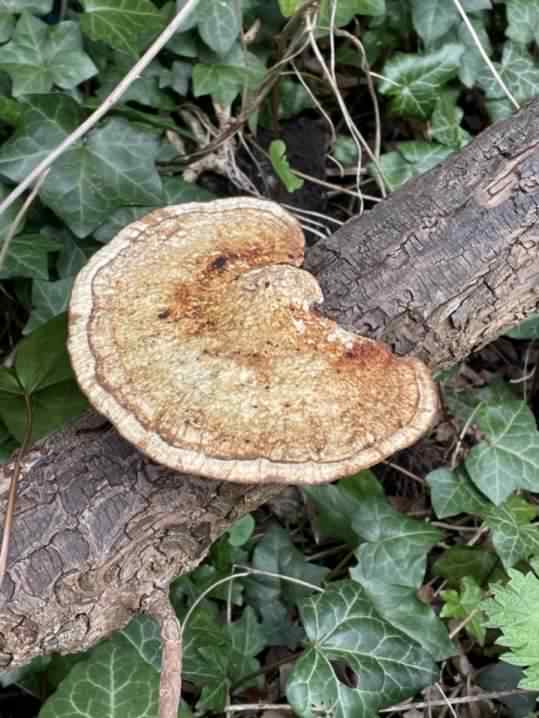
Photo ©2023–
Click any photo for a larger image


Photo ©2023–
Click any photo for a larger image

Blushing Bracket - Daedaleopsis confragosa
Family - Polyporaceae
Also known as - Thin Walled Maze Polypore
Daedaleopsis confragosa, also known as the thin walled maze polypore or the blushing bracket, is a saprotrophic fungus that belongs to the family Polyporaceae. It is a bracket fungus that is commonly found on the trunks and stumps of deciduous trees, particularly Oak, Beech, and Beech.
The fruiting body of Daedaleopsis confragosa is typically fan-shaped or circular, with a diameter ranging from 5-30cm (2-12in). It is characterized by its thin, reddish-brown, and zonate cap with a maze-like pattern of ridges and furrows on the surface forming a concentrically zoned brownish upper surface. When fresh, the cap is soft and pliable and measure up to 20cm (8in) in diameter and 2cm (0.8in) thick. It becomes harder and more brittle as it dries out.
Daedaleopsis confragosa is a plant pathogen and important decomposer of dead wood causing a white rot of injured hardwoods, especially Willows, playing a crucial role in the nutrient cycling of forest ecosystems. It is also used in traditional medicine for its anti-inflammatory and antimicrobial properties.
The underside of the cap is covered with tiny, whitish pores that release the spores that have a white spore print. The pore surface of Daedaleopsis confragosa often blushes a pinkish-brown when bruised or handled. The flesh of the fungus is thin and tough, with a slightly bitter taste and a mild, mushroom like odour.
BCP do not advise or recommend that Blushing Bracket – Daedaleopsis confragosa is eaten or used as an herbal remedy. Apparently it has been used in traditional medicine for its anti-inflammatory and antimicrobial properties.
Site design ©1999– Brickfields Country Park - Privacy -